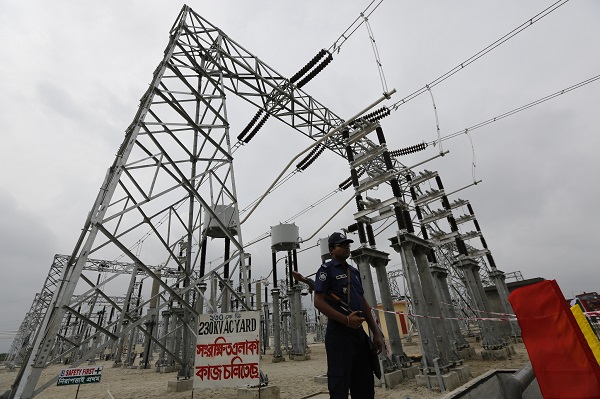MUMBAI – Indias lubricant market attracts much attention because of its trends for size and quality. But several of its neighbors – Bangladesh, Sri Lanka and Nepal – are also growing at attractive rates, an industry insider told a conference here this month.
At the ICIS India Base Oils & Lubricants Conference on April 5, Gulf Oil Lubricants India Ltd. Managing Director Ravi Chawla said lube demand in all three countries is growing due to economic expansion, growing vehicle parcs and investment in infrastructure.

Photo: Asian Development Bank / Flickr
Expansion of the countrys power grid is expected to help drive growth in Bangladeshs lubricant market.
Bangladesh is the biggest of the three markets, with annual lube demand of 73,000 metric tons, Gulf estimates. Lubricant consumption typically tracks economic activity, and some of the things that make the country an attractive lube market are the trends of its economy. It is among the Next 11 group of countries identified by Goldman Sachs as having potential – along with Brazil, Russia, India and China – to become the worlds biggest economies. Chief industries include textiles, agriculture and food and fisheries.
Chawla predicted that Bangladeshi lube demand will grow between 2 percent and 3 percent annually in coming years. He cited several key drivers: a forecast that gross domestic product will increase at rates of 6.1 percent or greater; expansion of the nations power grid; strength in its garment and steel industries, both sources of exports.
On the other hand, Gulf foresees a decrease in lubricant consumption for auto rickshaws with numbers of those three-wheelers expected to decrease sharply after the government banned them and unregistered public carrier vehicles from traveling on highways. The automotive segment accounts for 59 percent of total lubricant demand. The engine oil market is currently dominated by 20W-50 and SAE 50 products, and this will continue.
Chawla said the five largest suppliers for the overall market – ExxonMobil, Bangladesh Petroleum, Total, Shell and Castrol – control 63 percent of the market. Sixty percent of the lubricants consumed by the nation are produced locally.
Sri Lanka consumes 49,000 t/y, Chawla said. The government requires lube suppliers to be licensed, and currently there are 13 of them, including three that are authorized to blend: Chevron Lanka, Lanka IOC and Laugfs. Lubricant sales volumes fell a total of 7 percent in 2013 and 2014, but Chawla still expressed confidence that demand will grow between 4 percent and 5 percent in coming years. He cited forecasts of 6 percent to 7 percent growth in GDP and sunny prospects for key industries such as construction and mining.
Chawla said the top five players are Chevron Lanka, Lanka IOC, Ceylon Petroleum, ExxonMobil and Laugfs and that they control about 85 percent of the market. The automotive segment accounts for 72 percent of total demand.
Citing forecasts by Kline & Co. consultants, Chawla said engine oil consumption should shift toward 15W-40 multigrades, while the percent of monogrades falls from 60 percent in 2011 to 47 percent in 2021. The market should see increased demand for synthetic engine oils, mostly for high-end and mid-tier passenger cars.
Nepal consumes 13,000 t/y of lubricants, and the volume has grown at an 8.1 percent annual clip for the past five years, Chawla said. The list of leading suppliers has an Indian bent to it, as Indian Oil, Gulf Oil and Bharat Petroleum – all based in India – rank first through third, followed by Control and Castrol. These five companies hold a combined 51 percent of the market.
The automotive segment accounts for 70 percent of total demand. Engine oils for commercial vehicles is the largest category, with 25 percent of demand, followed closely by agriculture with 21 percent. Market shares for two-wheeler lubricants, passenger car motor oils and industrial lubes are all rising.
Chawla said demand should continue growing for a combination of reasons, including projects involving construction of infrastructure, roads and airports; healthy economic growth; double-digit growth in numbers of two wheelers; and easier availability of financing.